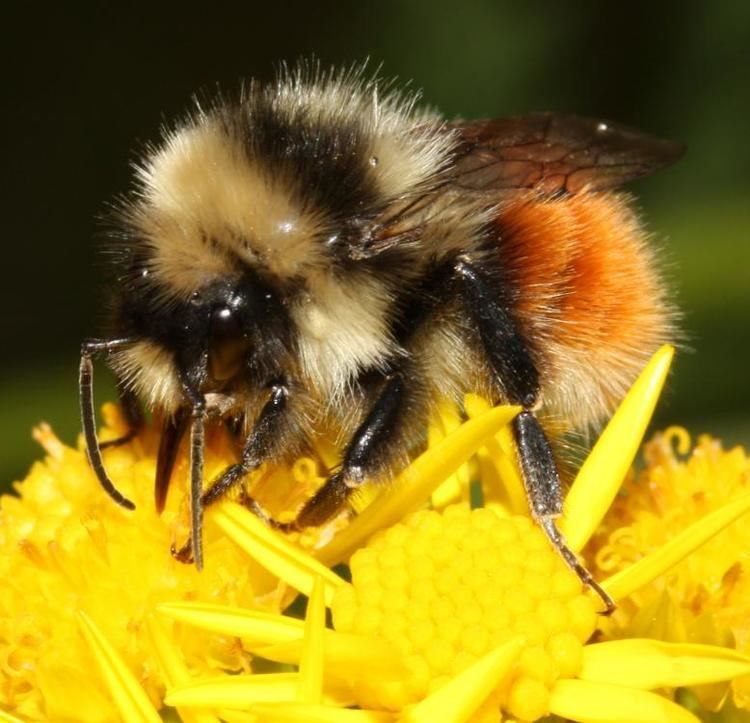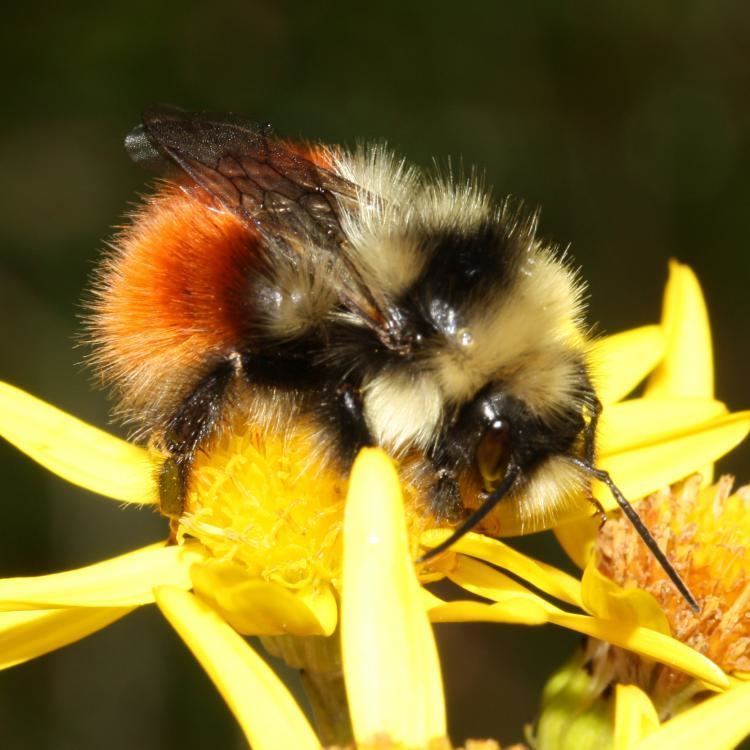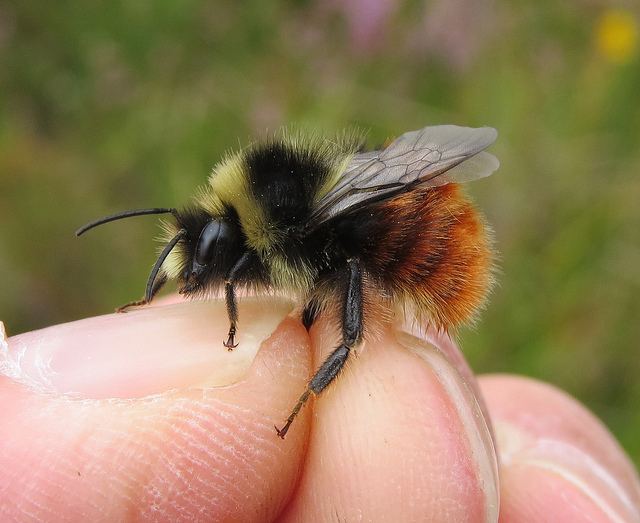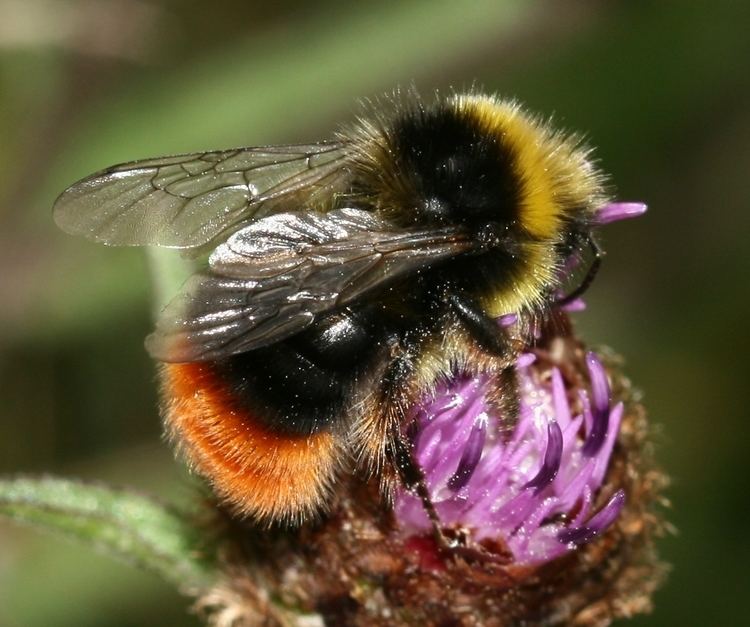Genus Bombus Scientific name Bombus monticola Rank Species | Subgenus Pyrobombus Higher classification Bumblebee | |
 | ||
Similar Bombus lapponicus, Bumblebee, Bombus alpinus, Bombus flavidus, Bombus jonellus | ||
Bombus monticola
The bilberry bumblebee or mountain bumblebee, Bombus monticola, is a species of bumblebee found in Europe.
Contents
Description

The bilberry bumblebee is rather small and compact, with a broad head and a short tongue. The queens have an average length of 16 mm (0.63 in), and a wingspan of 32 mm (1.3 in). The corresponding lengths of the other castes are 12 mm (0.47 in) (worker) and 14 mm (0.55 in) (male). In the nominate subspecies, the thorax is black, with the exception of a yellow collar (quite broad on the males) and on the edge of the scutellum. The first, and the frontal part of the second terga (abdominal segments) are black, as is the final tergite, but the rest of the abdomen is yellow to red.
Ecology

The bumblebee is normally a highland species, often found on bilberry, cranberry, and cowberry (Vaccinium vitis-idaea). It is a pollen storer; it actively feeds the larvae from a central pollen storage, rather than providing each larval cell with its own pollen container.
Taxonomy

This species was long considered a form of Bombus lapponicus; hovever, it is now divided in a number of subspecies:

Distribution
B. monticola is found in most mountainous areas of Europe, as northern Scandinavia (mostly Norway and northern Sweden; the distribution in Finland is rather patchy, and confined to the area along the Norwegian border), the Alps, the Cantabrian Mountains, the Pyrenees, the Apennines, and in the Balkans. It is also found in the lowlands in northern Norway and the Kola peninsula as on the British Islands. In Britain, it lives on upland habitat, predominantly moorland. The major areas populated by this bumblebee are Dartmoor, Exmoor, the Welsh uplands, the Peak District, the North York Moors, and the Scottish mainland.
It is a recent arrival in Ireland (first recorded in the 1970s). In Ireland, it is a montane species (hence the name). It is restricted to upland areas of counties Antrim (in the Northern Ireland part of Ulster) and Dublin, Wicklow, Carlow, and Wexford in the province of Leinster in the Irish Republic.
